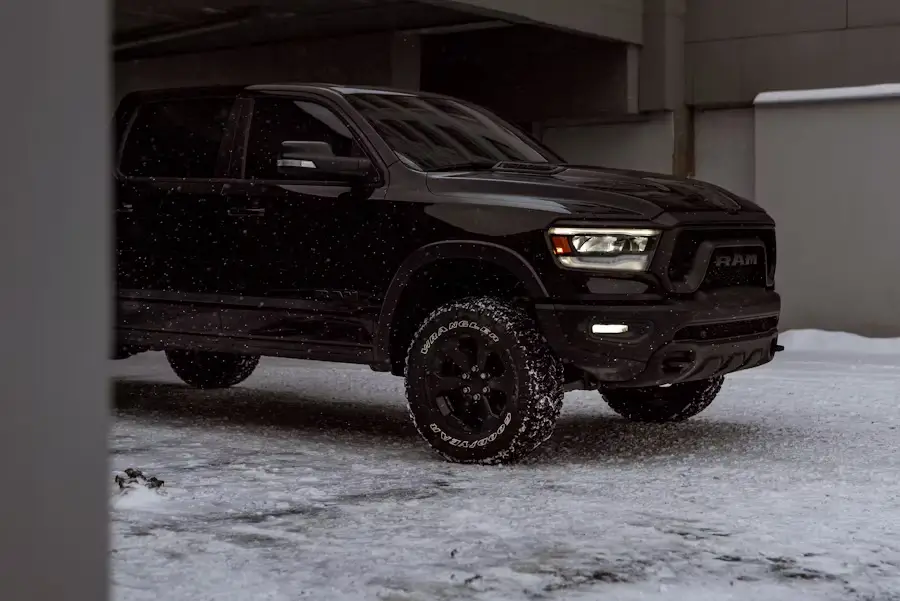


In the quietest moments of the workday—before concrete mixers rumble to life and the first hammer swings—something is already at work. It’s not loud. It doesn’t announce itself with diesel smoke or the groan of metal under strain. But it’s powerful. It’s precise. And it’s ushering in a transformation most job sites didn’t see coming. Welcome to the silent revolution.
This is not about future tech. It’s about what’s already rolling onto construction sites, farms, and infrastructure projects right now—next-gen trucks that do far more than haul and tow. Trucks that think, adapt, communicate, and even power an entire worksite. Trucks that are redefining what a “work vehicle” means.
There was a time when all a truck had to do was be tough. That’s changed. Today’s job site is digital, connected, and increasingly autonomous. It’s a space where productivity, uptime, and sustainability are measured in real time. And next-gen trucks? They’re not just along for the ride—they’re actively shaping the pace and efficiency of the day.
These machines aren’t showy, but they’re smart. You’ll find onboard diagnostics that predict maintenance before a wrench is even lifted. You’ll find fleet management systems that track fuel consumption, idle time, and driver behavior down to the minute. And most strikingly, you’ll find engines that can run quieter than a generator while powering everything from welders to circular saws.
Electric trucks are rapidly shedding their novelty status and claiming a new identity: mobile workstations. We’re talking about trucks with bi-directional charging ports, built-in power outlets, and batteries powerful enough to run tools all day without a generator in sight.
Contractors are now plugging their gear straight into their vehicle. Landscapers are charging for hedge trimmers. Roadside teams are powering floodlights. No need to drag around a noisy, high-maintenance generator. No need to worry about where to refuel. With just a truck and a charge, the job gets done—quietly and cleanly. And then there’s the software.
Many next-gen trucks come with integrated mobile apps that allow you to monitor battery output, lock the tailgate remotely, and even start the vehicle’s climate control from your phone. No more climbing into a frozen cab in the dead of winter or a stifling sauna in mid-January. The vehicle is ready before you are.Many next-gen trucks come with integrated mobile apps that allow you to monitor battery output, lock the tailgate remotely, and even start the vehicle’s climate control from your phone. No more climbing into a frozen cab in the dead of winter or a stifling sauna in mid-January. The vehicle is ready before you are.
New technology is only as good as its ability to keep people safe—and that’s where modern trucks are making their most important leap. Advanced driver-assist systems are now standard in many heavy-duty models. Think blind-spot cameras that factor in the length of a trailer, autonomous braking for objects that appear out of nowhere, and even systems that nudge the truck back into lane if the driver drifts while checking site plans on their dash.
But safety isn’t only about what happens on the road. Trucks now monitor cargo in real-time, sending alerts if sensitive equipment is jostled too roughly. Sensors detect tampering with tailgates and toolboxes. Some systems even sync with RFID-tagged equipment to make sure nothing gets left behind. This isn’t just tech for tech’s sake. It’s about protecting people’s livelihoods and, more importantly, their lives.
It used to be that you had to choose between power and comfort, tech and toughness, brains and brawn. But today’s market isn’t asking drivers to compromise. Need a truck that can haul 37,000 lbs and still offer massaging seats and 12-inch infotainment screens? That’s not a fantasy—it’s the new standard.
RAM, in particular, has pushed this envelope. A visit to a RAM dealer will quickly show how configurable these machines have become. Whether you’re building highways, wiring high-rises, or operating heavy farm equipment, there’s likely a RAM configuration tailored to your workload and work style.
With diesel, gas, and hybrid options—and even electrics on the horizon—you’re no longer locked into a narrow definition of what a work truck looks like. You're choosing from a spectrum of machines built with intention.
Carbon footprint matters—even on the toughest jobs. Government contracts, green certifications, and public pressure are all reshaping expectations. The industry’s response? Make the workhorse cleaner without dulling its edge.
New-generation trucks are integrating regenerative braking systems, energy-optimized drive modes, and idle-reduction tech. Some even offer real-time emissions monitoring. And yes, the shift to EVs is gaining traction—especially in urban projects where noise and air quality regulations are strict.
But here’s what makes this shift so powerful: it’s not slowing work down. In many cases, it’s streamlining it. Imagine rolling into a site before dawn, powering up lights and tools from the truck’s battery, with zero noise, zero fumes, and zero complaints from the neighborhood.
We’ve talked about sensors and software, but here’s where things get really interesting: trucks are now part of the data ecosystem on a job site.
Modern trucks are collecting data on everything from load balance and terrain response to tool usage and site temperatures. This information can be uploaded to cloud-based project dashboards, giving managers a live pulse on the site without ever setting foot on the dirt.
Fleet managers can redirect resources based on real-time insights. Maintenance teams can preempt breakdowns. And workers? They get vehicles that respond more intuitively to the challenges they face hour by hour.
There’s also something quietly cultural happening. Trucks are a kind of language on job sites. They signal status, experience, and identity. And while that hasn’t changed, what does say something new now is the kind of tech sitting behind the grille.
Driving a truck with built-in mobile command, power generation, and real-time diagnostics no longer feels like a luxury—it feels like leadership. It says you’re ahead of the curve, willing to invest in tools that make the entire crew more efficient.
If the last five years have taught us anything, it’s that truck tech won’t be slowing down anytime soon. We’re already seeing concepts emerge with autonomous backing systems, solar-powered bed caps, and AI-based work planning tools that integrate with the vehicle’s onboard systems.
What’s clear is that the work truck of the near future isn’t just a tool. It’s an active, intelligent member of the team. And if you’re the one behind the wheel, you’re not just driving it—you’re steering the future of the job site itself.

This revolution may be quiet, but it’s reshaping everything. Trucks are no longer just the muscle of the job site. They’re becoming the brain, the backbone, and even the power source of the day’s work. Whether you're upgrading your fleet or stepping into your first serious build, it's worth paying attention to what these next-gen machines can really do.